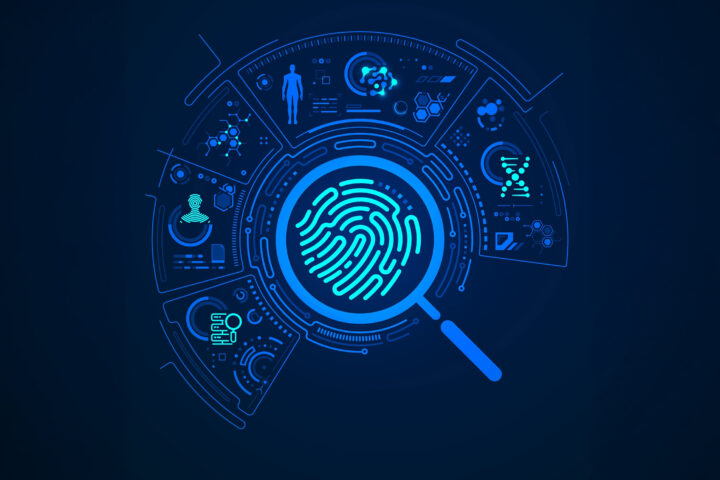What is the Ketogenic Diet?
The ketogenic diet, commonly referred to as the keto diet, has gained significant attention in recent years for its potential health benefits. The keto diet is a low-carbohydrate, high-fat, moderate-protein dietary pattern.
Why is it so important to limit carbohydrates?
Under normal dietary conditions, our bodies rely on glucose, made by digesting carbohydrates in our diet, for energy. However, when carbohydrate intake is limited over the course of many days, the glucose levels in the body drop too low to provide enough fuel for the rest of the body. This is when the liver starts converting fat into molecules called ketones, which can be used by the brain and other organs for energy in the absence of glucose. This phenomenon when the body starts preferentially using fat instead of glucose is called “nutritional ketosis.”
Which foods are included in a keto diet?
While the idea of a high-fat diet may conjure images of butter mountains and bacon strips, it’s essential to choose healthy fats and nutrient-dense foods. Here’s a general list:
- Fats and Oils: Avocado, olive oil, coconut oil, butter, and ghee.
- Proteins: Grass-fed meats, fish, eggs, and full-fat dairy.
- Vegetables: Leafy greens, broccoli, cauliflower, zucchini, and more. Generally, above-ground veggies are preferred as they have fewer carbs.
- Nuts and Seeds: Almonds, walnuts, chia seeds, flax seeds, etc. in moderation.
- Beverages: Water, herbal teas, coffee, and bone broth.
- Grains, sugars, most fruits, and processed foods are typically avoided.
- While protein foods are encouraged on the diet it’s important to note that too much protein should be avoided, because some of the amino acids contained in protein can be converted to glucose, which will prevent you from entering ketosis.
History of the Ketogenic Diet
The keto diet may seem like a modern fad, but its origins can be traced back at least 100 years. Fasting, which is another known way of inducing ketosis, was often used as a treatment for various ailments. One of the earliest instances of this was in the 1920s where short periods of starvation were used as a treatment for epilepsy, a neurological disorder of the brain characterized by frequent seizures. Before the advent of antiepileptic drugs, fasting was a recognized method to reduce seizure frequency. The ketogenic diet was designed to mimic the metabolic effects of fasting (both deprive the body of glucose causing it to use fat for energy) while allowing for food intake. Even today, the ketogenic diet is considered a treatment option for patients with epilepsy.
Potential Health Benefits
The ketogenic diet’s benefits can extend beyond its initial use for epilepsy. Many proponents of the keto diet report weight loss. The idea is by using fat as a primary fuel source, the body can more efficiently burn stored fat, leading to weight reduction.
Another commonly reported benefit felt by many keto dieters is clearer thinking and improved concentration. This may be attributed to the brain using ketones for fuel.
Potential Side Effects
Transitioning to the keto diet can come with a few challenges, often referred to as the “keto flu.” As your body adapts to burning fat, it is normal for you to experience fatigue, headaches, dizziness, and irritability. These symptoms usually subside within a week, once you’ve entered ketosis.
Additionally, because you’re excluding several food groups, there’s potential for nutrient deficiencies if not done correctly. It’s essential to ensure you’re getting a variety of foods to obtain all necessary nutrients.
While many people have had success and well-being on the keto diet, it’s not a one-size-fits-all solution. Individuals with certain medical conditions, including some liver diseases and pancreatic conditions, should avoid this diet. Always consult with a healthcare professional before making significant dietary changes.
Conclusion
The ketogenic diet, with its rich history and transformative potential, offers a unique approach to health and wellness. Like any dietary shift, it requires commitment, understanding, and a touch of experimentation. If you’re considering embarking on the keto journey, arm yourself with knowledge and seek guidance when needed. As with all things health-related, remember that your journey is personal, and what works best for one might not work for another. Listen to your body and adjust accordingly.
References
- D’Andrea Meira I, Romão TT, Pires do Prado HJ, Krüger LT, Pires MEP, da Conceição PO. Ketogenic Diet and Epilepsy: What We Know So Far. Front Neurosci. 2019;13:5. Published 2019 Jan 29. doi:10.3389/fnins.2019.00005
- Kossoff E. Ketogenic Diet. Epilepsy Foundation. October 25, 2017. Accessed October 25, 2023. https://www.epilepsy.com/treatment/dietary-therapies/ketogenic-diet
- Diet Review: Ketogenic Diet for Weight Loss. Harvard School of Public Health. Accessed October 25, 2023. https://www.hsph.harvard.edu/nutritionsource/healthy-weight/diet-reviews/ketogenic-diet/
- Mawer R. The Ketogenic Diet: A Detailed Beginner’s Guide to Keto. Healthline. June 28, 2023. Accessed October 25, 2023. https://www.healthline.com/nutrition/ketogenic-diet-101#what-it-is











